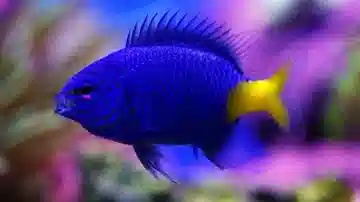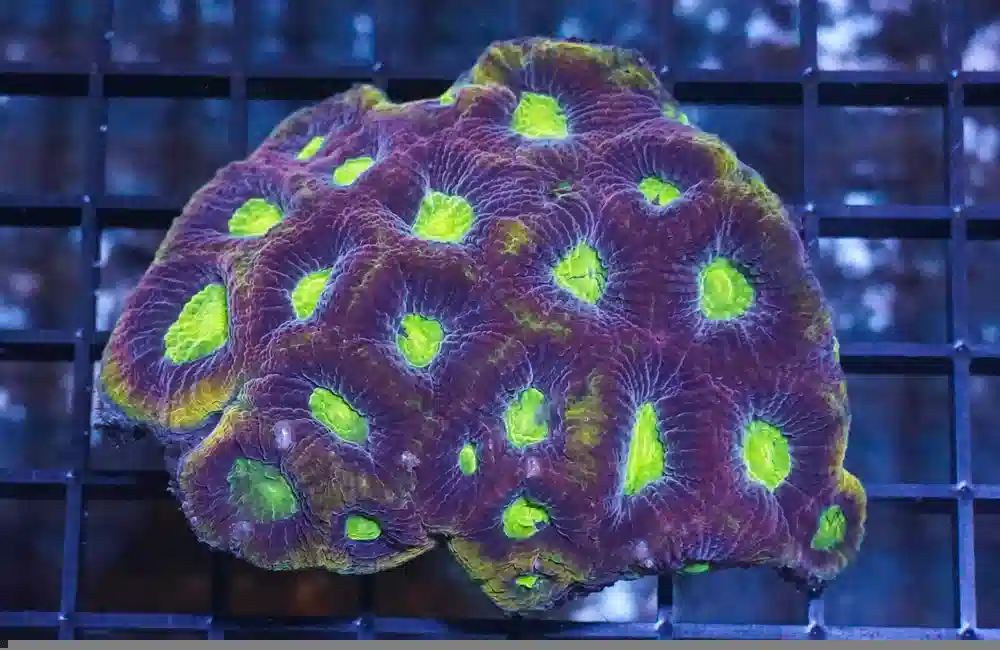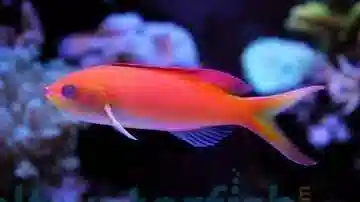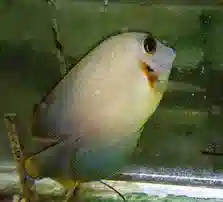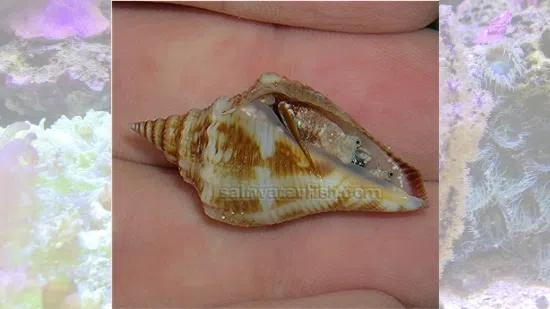Fighting Conch
Strombus gibberulus
(24 Reviews)
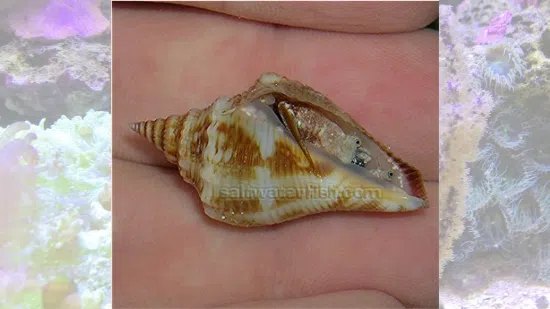
Fighting Conch
Strombus gibberulus
(24 Reviews)
{{ item.name }}
Size: {{ item.extra_field_3 }}
${{ getFormattedPrice(item.saleprice) }} ${{ getFormattedPrice(item.price) }}
To join the waiting list, click here
Free Shipping
With
$199.00
or more in Marine Life.
More details...
Fighting Conch Care Facts
| Size: | 1-2 inches |
|---|---|
| Care Level: | Easy |
| Temperament: | Peaceful |
| Reef Safe: | Yes |
| Diet: | Algae |
| Origin: | Aquacultured |
| Acclimation Time: | 2+ Hours |
| Coral Safe: | Yes |
| Minimum Tank Size: | 10 gallons |
Fighting conches are a member of Strobidae family. They are commonly known as queen fighting conches. Conches are found in tropical oceans all over the world. The queen conch sometimes produces a hard mass called a conch pearl. Many species of true conchs live on sandy bottoms among beds of sea grass in tropical waters. Fighting conches feed on algae and have a claw-shaped operculum. Fighting conches are omnivorous. Fighting conches have spirally constructed shells. Fighting conches grow a flared lip on their shells only upon reaching sexual maturity. Fighting conches lay eggs in long strands: the eggs are contained in twisted gelatinous tubes. It is easy to care of them. Fighting conches are reef compatible. Fighting conches have a peaceful temperament. Hermit crabs can kill the fighting conches. Fighting conches feed on detritus. Fighting conches have a long operculum, a hardened area of the animal?s foot that covers the opening in the shell when the conch retracts inside. Fighting conches will squirt water when in open air. Fighting conchs are colorful. Food supplements such as fresh fishes, and dried seaweed, as well as high quality frozen feeds to supplement what they fed on from the bottom of the tank. The fighting conch shows a peaceful temperament. Fighting conches are reef compatible. They thrive under water conditions of 72-78 degree Fahrenheit. The pH of the water should be 8.1 to 8.5 pH. "Peaceful" fighting conches do not possess any stinging cells, and do not release chemicals to ward off their neighbors. Fighting conches do not require any special feeding techniques and can tolerate less than perfect water conditions. It requires a moderate lighting and moderate water flow, along with both sandy and rocky locations. It requires a strong current and good water quality in order to flourish in the tank.
The Fighting Conch (Strombus gibberulus) in Marine Aquariums
The Fighting Conch (Strombus gibberulus) is a captivating and unique addition to marine aquariums. With its striking appearance and interesting behavior, this conch species can bring action and activity to any reef environment. Let's explore the habitat, growth rates, size, lifespan, diet, aquaculture potential, other common names, and compatible tank mates of the Fighting Conch.
Habitat of the Fighting Conch
The Fighting Conch is native to the warm waters of the Indo-Pacific region, including the Red Sea and the western Pacific Ocean. In the wild, they are typically found in shallow sandy or muddy substrates near coral reefs.
Growth Rates and Size
The growth rate of the Fighting Conch can vary depending on the aquarium's conditions and food availability. Typically reaching 2 to 3 inches (5 to 7.5 cm) in shell length, these conchs can live several years under proper care.
Diet and Behavior
The Fighting Conch is primarily a herbivore, feeding on algae and detritus in the aquarium’s sand bed. They use their specialized foot to sift through the substrate for food.
Aquaculture and Availability
While commonly found in the aquarium trade, most Fighting Conchs are collected from the wild. Captive breeding efforts are less common for this species.
Compatible Tank Mates
When selecting tank mates for the Fighting Conch, consider peaceful options that won't harm it:
- Clownfish (Amphiprion spp.): Peaceful clownfish can coexist harmoniously with the Fighting Conch.
- Dottybacks (e.g., Pseudochromis spp.): Some dottyback species can be suitable tank mates, provided they are not aggressive.
- Gobies (e.g., watchman gobies or neon gobies): Peaceful gobies can cohabit harmoniously with the Fighting Conch.
- Blennies: Peaceful blennies can add character and activity to the tank alongside the Fighting Conch.
- Tangs (e.g., Yellow Tang): Certain tang species can coexist with the Fighting Conch in larger aquariums, but avoid aggressive tangs.
Conclusion: Enrich Your Aquarium
The Fighting Conch (Strombus gibberulus) is an intriguing addition to marine aquariums, enhancing the environment with its distinct appearance and sand-sifting behavior. By providing suitable conditions and companion species, aquarists can enjoy the beauty and charm of these captivating conchs. With proper care, the Fighting Conch can thrive as an exceptional sand-sifting companion in any marine aquarium.
Reviewed by: Kayla Jesse on Aug. 29, 2024
Reviewed by: Gary Sparks on Aug. 4, 2024
Reviewed by: David Kelley on Aug. 4, 2024
Conchs are great for cleaning sand
Reviewed by: Jim Hauck on July 30, 2024
Very nice. Exactly as described. Arrived healthy.
Reviewed by: David Sanders on July 30, 2024
Reviewed by: Gary Sparks on July 28, 2024
Healthy and active right out of the bag.
Reviewed by: Brian Clark on March 27, 2024
Reviewed by: Eric Bell on March 3, 2024
Great shape when it arrived. Got to work within minutes. I have about 5 Fighting Conchs. They don't fight. Not sure why they are named "Fighting". It was about 1".
Reviewed by: John Atella on Feb. 26, 2024
Reviewed by: Robert Stokes on Dec. 27, 2023
Reviewed by: William Nesselrotte on Dec. 13, 2023
Reviewed by: Scott Harper on Dec. 10, 2023
Came alive ????
Reviewed by: John Stone on Dec. 10, 2023
Great shape. Small but healthy.
Reviewed by: John Atella on Dec. 6, 2023
Great at cleaning sandbed
Reviewed by: Mary Fetterley on Dec. 3, 2023
Reviewed by: Danny Fenton on Nov. 21, 2023
Arrived alive and is doing well . He’s under the sand so haven’t seen much of him
Reviewed by: Jeffrey Haut on Nov. 16, 2023
Reviewed by: Tim Lowe on Nov. 16, 2023
Reviewed by: Rosemarie Santos on Nov. 8, 2023
Doing their thing in the sand.
Reviewed by: Marty Costello on Nov. 7, 2023
Reviewed by: Benjamin Peck on Oct. 14, 2023
All 4 are doing great.
Reviewed by: Eric Wilson on Sept. 25, 2023
Reviewed by: David Orear on July 26, 2023
Fighting Conch Great addition to 28g Biocube reef tank. Very healthy and active. Add great color to coral tank.
Reviewed by: Shia M. on Sept. 17, 2021


